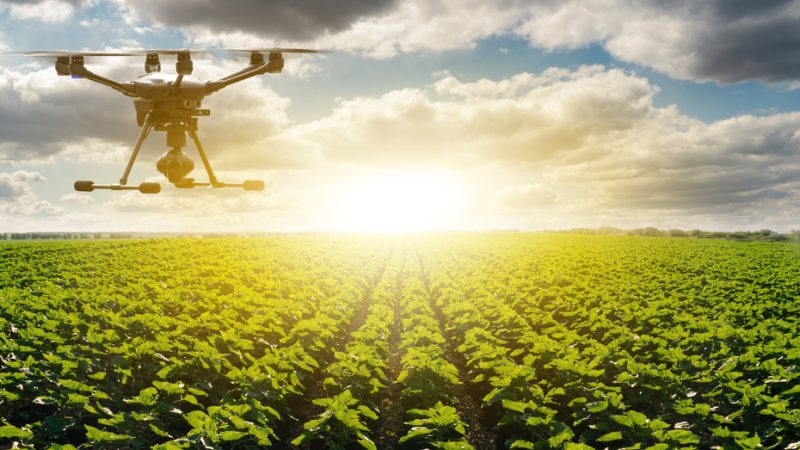
In Europe’s fields, a revolution is quietly unfolding, it’s not a rebellion of pitchforks and torches, but of drones and data. Innovation, the invisible hand guiding this transformation, is sowing the seeds of a new agricultural epoch.
Throughout human history, agriculture has been instrumental in addressing some of humanity’s most pressing challenges by increasing food production to levels many thought impossible. Now, the contours of traditional farming are being redrawn by harnessing processing power instead of horsepower.
Precision agriculture, powered by AI and IoT, is replacing guesswork with data-driven decisions, optimizing yields and conserving resources. Biotechnology is unlocking the genetic potential of crops, fortifying them against climate change and pests.
Vertical farming, a testament to human ingenuity, is challenging the very notion of ‘field’, turning urban landscapes into food factories.
This wave of innovation is not just reshaping agriculture, but also redefining our relationship with food, nature, and ultimately, ourselves. Technological breakthroughs are cultivating a future of abundance, sustainability, and resilience.
Food systems, complex challenges
The IPCC Special Report on Climate Change and Land Use estimates that a fifth to a third of global greenhouse gas (GHG) emissions are attributable to our food systems: 9-14 % are caused by crop and livestock production on farms, 5-14 % by land use, and 5-10 % by the food production value chain.
In Europe, agriculture contributes more than 10% of the EU’s total greenhouse gas (GHG) emissions and is a leading cause of biodiversity loss and freshwater consumption. It is the fourth-largest sector that has seen little progress in mitigating its environmental impact since 1990.
Through its European Green Deal, the EU has committed to cutting emissions by 55% by 2030 and to becoming carbon neutral by 2050. It also set an interim target of a 90% net emissions reduction by 2040.
At the heart of the deal is the Farm to Fork strategy, which aims to make food systems healthy and sustainable. This strategy is centred on proven agriculture approaches, often called “climate-smart agriculture.”
Fields of discontent
However, convincing European farmers to adopt the practices to meet these bold climate targets has been met with resistance. Earlier in the year, farmers’ protests broke out in many countries across Europe, expressing discontent with various interconnected issues.
In response to the protests and an unwillingness to take unpopular decisions before the EU elections in June, the EU scrapped, at the last minute, a goal to cut farming emissions from its 2040 climate roadmap. It also withdrew a proposed EU law to reduce pesticides and delayed a target for farmers to leave some land fallow to improve biodiversity.
The European Commission’s latest plan said “all sectors” must contribute to the effort but it removed the mention of a possible 30 % cut to agricultural pollution between 2015 and 2040. The commission also removed the recommendations for citizens to change their behaviour and a push to end fossil fuel subsidies.
While this may offer temporary relief to farmers and policymakers alike, it also paves the way for a more challenging journey to achieve sustainable agricultural practices.
Collaborative and innovative solutions
Despite tensions in various European countries, a European Environment Agency (EEA) report found farmers are adopting or trying to adopt several measures to reduce farming emissions, many of which are part of the EU’s Common Agricultural Policy (CAP).
Historically, this policy focused on productivity and efficiency, often at the expense of the environment. However, it has begun prioritising environmental protection alongside crop yields over time.
The report highlights several frequently supported measures by EU member states, including optimising livestock diets and health management, improving manure management systems, reducing nitrogen fertiliser application, and promoting practices that enhance soil carbon storage.
High infrastructure costs
However, it also noted that the high costs for infrastructure improvements and a lack of knowledge sharing and support are still significant barriers for farmers wishing to adopt gas reduction measures.
A World Economic Forum report assessing the EU’s farmer and food value-chain landscape and recommending a path toward climate-smart agriculture further supported these findings.
Like the European Environment Agency report, the WEF assessment found that lacking knowledge or available information was the second most cited barrier after high perceived investment costs.
On average, 70% of the surveyed farmers reported searching for information on climate-smart farming, demonstrating interest in the area. However, only one out of four reported having ‘good’ or ‘very good’ knowledge of the subject.
Increasing knowledge
Increasing knowledge is critical as some of the key areas of opportunities identified in the report include innovation and technology, where targeted efforts could significantly enhance the adoption and effective use of climate-smart practices.
One such opportunity is adopting digital technology, the benefits of which include improved productivity, crop and soil quality, and more efficient operations.
For example, by analysing data from sensors, tractors, and satellites, farmers can track crop and soil health, make planting decisions, and precisely guide fertiliser and water use to improve business efficiency, tackle fertiliser loss, and reduce farm expenses, water pollution and emissions.
European initiatives like Farmtopia, for example, aim to make Agricultural Digital Solutions (ADS) more accessible and cost-effective for smaller farmers.
SmartAgriHubs brings together start-ups, SMEs, business and service providers, technology experts, and end-users to drive digital transformation. The Farm Sustainability Tool (FaST) digital services platform is an app that brings together space data specifically for farmers.
New technologies can help farmers deliver optimal results for their businesses and the planet. These include precision agriculture for input and water use, information technology, automation, robotics, and decision-support technologies that eliminate the guesswork in fertiliser, pesticide use, irrigation, and livestock management.
With the EU’s ambitions and the sector’s complexities, scaling climate-smart agriculture across the EU feels overwhelming, but with cross-sectoral buy-in, the mission is possible.
[By Elizabeth De Gaetano I Edited by Brian Maguire | Euractiv’s Advocacy Lab ]
